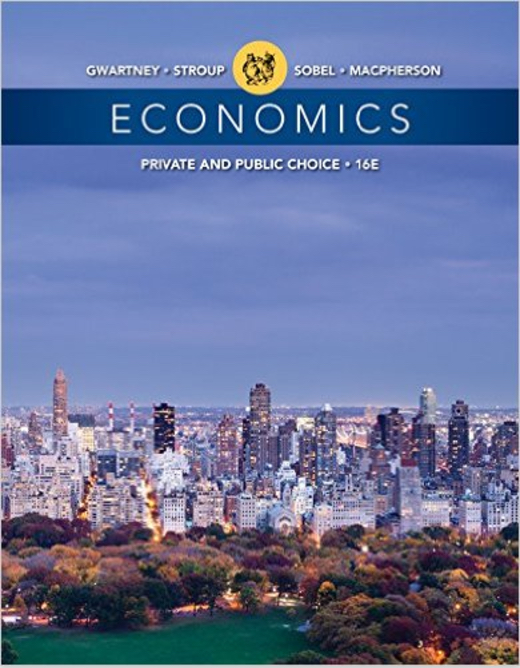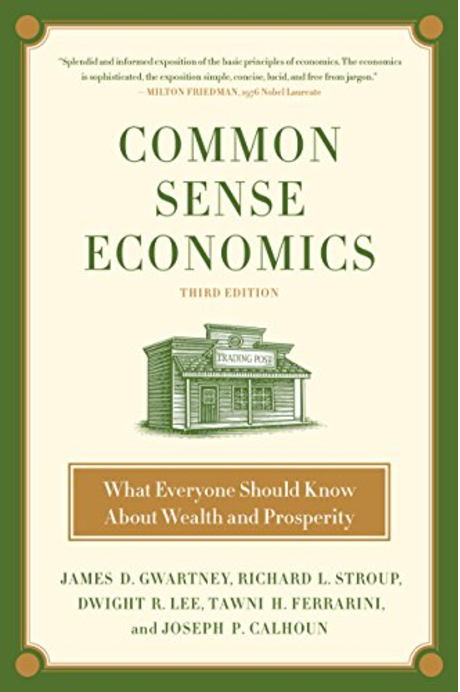Cengage Learning, 2022.
 By James Gwartney, Richard Stroup, Russell Sobel and David Macpherson
By James Gwartney, Richard Stroup, Russell Sobel and David MacphersonMany believe that principles texts are pretty much the same. There is some truth in this. They all cover topics like supply and demand, elasticity, and national income accounting in a similar manner. But there are also important differences. Economics: Private and Public Choice differs from other texts in three important ways.
• First, the text covers market and political decision-making in a balanced manner. When the late Milton Friedman was asked how one could determine if a text was balanced, he responded, "Check to see if it covers both market and government failure." Does your current text cover both, or does it treat government as if it is a "corrective device" available to impose ideal solutions? Currently 40 percent of national income is channeled through the political process. Does your text explain the forces allocating this 40 percent? Does your text explain why special interest issues are so attractive to political decision-makers? Does it explain that the political process is short-sighted — that it is biased toward adoption of programs that provide immediate easily identifiable benefits at the expense of costs that are pushed into the future? If not, your students are left with a false impression about the forces underlying today's headlines.
• Second, Economics: Private and Public Choice highlights the importance of dynamic competition and entrepreneurship. Innovative new products and lower cost production methods are the driving force of both competition and economic growth. These vitally important factors are overlooked by other texts, but we explain how they alter our lives and change our lifestyles.
• Finally, students have more questions about the current state of the economy than ever before. They want to understand the causes of the housing boom and bust, the 2008 financial crisis, the impact of the 2020-2022 pandemic, and the growth of the federal debt. They want to know where all of this is leading. Economics: Private and Public Choice deals with all of these issues and provides empirical evidence that will help you address their questions.
It Also Includes Special Topics
• Many believe that the Great Depression was caused by the 1929 stock market crash and that New Deal policies hastened its end. Is this really true? Special Topic 7 "Lessons from the Great Depression" of Economics: Private and Public Choice, 17th edition provides answers.
• Was the Great Recession of 2008-2009 the result of the instability of markets or imprudent government policies? See Special Topic 6 "The Great Recession of 2008-2009: Causes and Response" in Economics: Private and Public Choice, 16th edition.
All of us want to make economics come alive for our students. Economics: Private and Public Choice will help you achieve this goal. If you do not have an examination copy, request one from Cengage today by clicking here.
For access to the powerpoint slides that accompany the textbook, click here.
